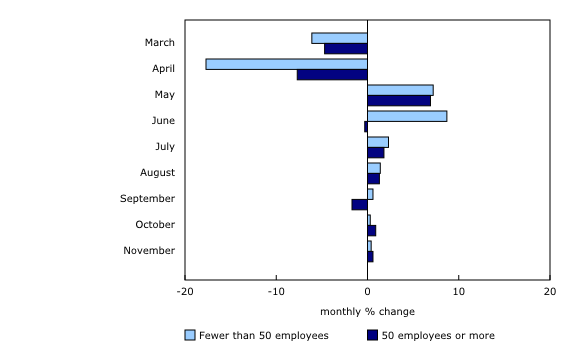New broadband infrastructure contracts signed for Niagara
Today, the Governments of Canada and Ontario marked the signing of all contracts for broadband infrastructure that will deliver reliable internet access to nearly 5,629 homes and businesses across Niagara. Construction of the infrastructure network is expected to be up and running with service expected to start through the second half of 2022. These projects are valued at $21.2 million and will deliver reliable internet access to more homes and businesses in underserved areas of the region.
The contracts to expand fibre-optic broadband services in Niagara Region were awarded by Southwestern Integrated Fibre Technology (SWIFT) Inc, a not-for-profit corporation initiated by local municipalities to address connectivity in Southwestern Ontario.
St. Catharines, Niagara Falls Enterprise Centres offer free virtual event on insights into success
The St. Catharines Enterprise Centre is teaming up with local and provincial partners to provide some insight for businesses in achieving success despite the unprecedented challenges posed by COVID-19 and its impact on the economy.
On Feb. 9, 2021, the St. Catharines Enterprise Centre (SCEC) and the Niagara Falls Small Business Enterprise Centre will bring together leading business professionals and the most resilient small business owners in Niagara to explore current shifts in business practices and marketing strategies. The free virtual event — Bridges to Small Business: Resiliency, Recovery and Building Momentum in 2021 — will feature business experts presenting emerging tactics, ideas and best practices to aid success for small businesses.
The event runs from 9 a.m. to noon and is free to attend. Registration is required. Visit investinstc.ca/BridgesToSmallBusiness for more information and to sign up.
Number of Canadian businesses exporting goods continues to recover

Percentage change (month over month) in number of exporting enterprises, by enterprise employment size, March to November 2020
Despite several provinces beginning to implement new measures to contain the resurgence of COVID-19 in November, the number of exporting enterprises in Canada grew by 0.4% in November to reach 19,399, the highest level since February 2020. This increase was led by manufacturing exporters, a sector generally less affected by government restrictions than the services sector.
Compared with the low in April, the total number of exporters in November had recovered by over 3,000 enterprises. Nonetheless, Canada still had nearly 1,000 fewer exporting enterprises (-4.8%) than were recorded in February, before the pandemic.
On a geographical basis, much of November’s increase in exporters was from more enterprises selling to the United States, up by 0.8% to 15,991. Conversely, the number of enterprises exporting to China was down 3.8%, its largest decrease since February.
In general, the effects of the pandemic were more pronounced for establishments in the services-producing sector. Firms in services-producing industries were particularly hard hit in exporting to the United States. The number of establishments in the services sector that exported to the United States was down 15.5% from November 2019, with the largest declines in wholesale trade; retail trade; and professional, scientific and technical services.
Reading recommendations
The GameStop stock frenzy, explained
Emily Stewart, Vox
Who knew the first big 2021 stock market story would be … GameStop? But here we are.
There’s been a boom in day trading and individual investing over the past several months — activity that’s often taking place or being discussed on platforms such as Reddit and Robinhood instead of in more traditional arenas. And one big question amid the frenzy has been how much the little guys really matter. Sure, small-time investors trade a lot, sometimes to the annoyance of more traditional institutions, but are they really consequential?
President Joe Biden signs an executive order to Buy American
The Economist
American taxpayers’ dollars should be spent on American goods made by American workers and with American-made parts. So says President Joe Biden, newly installed in the White House. On January 25th he signed an executive order meant to pull more of the $600bn of annual federal procurement spending into American hands. The order was protectionist in spirit: more home-made components means fewer foreign ones. But America’s international commitments also mean that Mr Biden’s measures may not have much effect.
Niagara COVID status tracker
Niagara’s most up-to-date COVID statistics, measured against the targets for the various stages of the Ontario COVID-19 Response Framework, are presented below. This does not predict government policy, but is offered to give you an idea of where Niagara is situated and how likely a relaxation (or further restrictions) may be. These data are drawn daily from Niagara Region. The Grey-Lockdown level does not have its own metrics, but is triggered when the COVID-specific measurements in a Red-Control region have continued to deteriorate.
Note that the Provincewide Shutdown is not the same as the Grey-Lockdown level listed in the Ontario COVID-19 Response Framework, which has been suspended for the duration of the shutdown. Additional restrictions for businesses apply during the Shutdown. Businesses should not use the Response Framework as a guide during this time, but should instead refer to the Shutdown guidelines.
| December 18 | December 25 | January 1 | January 8 | January 15 | January 22 | January 29 | |
|---|---|---|---|---|---|---|---|
| Reproductive number | 1.4 | 1.8 | 1.4 | 1.1 | 1.0 | 0.7 | 0.9 |
| New cases per 100,000 | 101.2 | 267.3 | 469.8 | 575.8 | 507.1 | 295.5 | 250.6 |
| New cases per day (not including outbreaks) | 60.7 | 178.7 | 311.7 | 376.9 | 325.4 | 182.7 | 145.7 |
| Percent of hospital beds occupied | 97% | 95.2% | 98.2% | 103.2% | 104.5% | 103.6% | 106% |
| Percent of intensive care beds occupied | 78.8% | 77.3% | 87.9% | 87.9% | 90.9% | 89.4% | 93.9% |
| Percentage of positive tests | 6.1% | 15.6% | 28.1% | 28.6% | 26.6% | 21.2% | 16.2% |
Definitions:
- Weekly Incidence Rate: the number of new COVID-19 cases per 100,000 people per week
- Percent Positivity: the number of positive COVID-19 tests as a percentage of all COVID-19 tests performed
- Rt: the reproductive rate, or the number of people infected by each case of the virus



